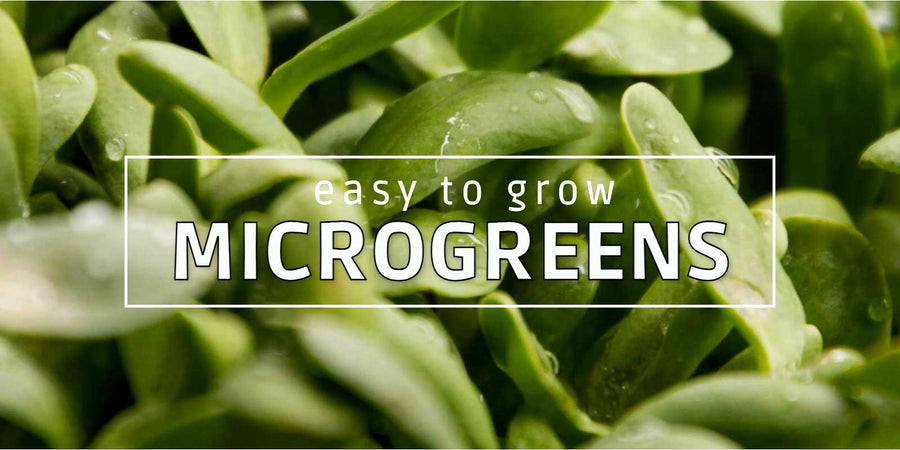As we head towards the Winter solstice, and daylight is in short supply, it is difficult to get any vegetables to germinate outside. But that doesn't mean I have to do without any fresh greens on my plate. I started growing Microgreens during the first winter lockdown and was amazed at how well the seeds grew on my windowsills. After a bit of experimenting I found out that the seeds germinated and grew best on my east-facing windowsills. In that position they could make the most of the morning sun (when it appeared).
Microgreen growing made easy

What veg can you grow indoors this Winter? Introducing Microgreens!
First things first... what are Microgreens?
Microgreens are exactly what they sound like …. tiny vegetable plants. But despite their size they contain more healthy nutrients and phytochemicals per gramme than mature vegetable crops.
Also, their flavour is enhanced, so a tablespoon of 2cm radish, beetroot or kale seedlings will give dishes a real kick. Eat them raw; sprinkled on top of soups, salad, stir fries, pizzas or sandwiches. As it only takes a short time from sowing the seeds to eating the crops, they are perfect growing projects for the impatient gardener.
Where to grow your Microgreens?
I don’t have a lot of windowsill space to grow on, so I used half seed trays or standard mushroom trays with a few drainage holes in the bottom. Coir compost is good to grow in as it’s peat free and fairly sterile, so I can avoid those pesky, tiny flies that often emerge from damp compost indoors. Coir doesn’t contain many nutrients, but my microgreens don’t require any extra feed as they are harvested after a few weeks.
I water my microgreens from the bottom, which means I stand my seed trays in a tray or flat-bottomed bowl and put the water in that – letting the seedlings draw up the water they need. This makes it easy to water the seedlings – I make sure there is about 1cm of water in the bowl and top it up when it’s empty.
Sow easy... how to grow your Microgreens!
I prepare my tray by filling it loosely with coir, then I level it off and use another tray to press down on the coir and consolidate it, so it is flat and about 1.5cm below the edge of the tray. Then I sow the microgreen seeds close together – they don’t need much space as they’ll not be growing to their full size. I usually put a mix of at least three different seeds in a tray, so I have a combination of flavours when I harvest them.
This month I’m sowing a mix of Pink Kale, Salad/Spring Onion, Amaranth ‘Red Army’ and Radish ‘Sango’. Once I’ve sown the seeds, I sprinkle a thin layer of coir on top of the seeds and put the tray in a bowl on my windowsill. I cover the tray for the first few days to keep heat and moisture in and encourage germination.
After the seeds start sprouting, I remove the cover to allow for good air circulation. I also turn my trays every day, so my seedlings don’t lean over towards the sun. After two weeks I’ll start to harvest the seedlings with a pair of clean sharp scissors as and when I need them. I sow a tray every couple of weeks to give me a supply of fresh microgreens throughout the winter months.
Leaves = Free Mulch For Next Winter!
If there are any tree leaves left in your garden or allotment don’t waste them… rake them up and put them into black bags, old compost bags or bin bags are ideal. Put a few holes in the bags and put them somewhere where they will be undisturbed and stay damp. Make sure the leaves stay damp and they will decompose over the next twelve months; ready to use as a mulch next winter.
Subscribe to Sue's Sowing Tips
Receive more valuable sowing tips just like this article direct to your inbox each week.
Get started growing your microgreens today!
"Great germination rate and growing strongly."
Julietta
"They have germinated well and are growing strong. Looking forward to eating them."
Antony
"I had poor germination from apparently fresh seed from another company. Bought these and every seed germinated. Fantastic."
Tracy



